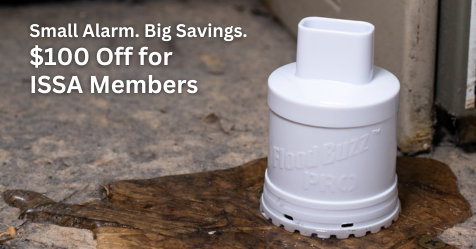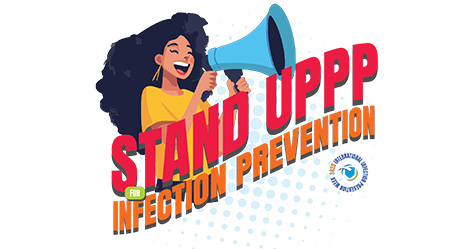MRSA Survivor Shares Her Story in Hopes of Helping Future Patients
2025 Healthcare Surfaces Summit convenes to brainstorm strategies for infection prevention
In 2000, Jeanine Thomas was admitted to a hospital for surgery to repair her broken ankle after she slipped and fell on ice. This week, Thomas shared her story of contracting Methicillin-resistant Staphylococcus aureus (MRSA) from germ-ridden instruments used during the surgery and ultimately contracting sepsis and C. difficile as well.
“I didn’t think I’d still be here talking about this 25 years later,” she told the participants at the 2025 Healthcare Surfaces Institute Summit at ISSA headquarters in Rosemont, Illinois.
Thomas was a speaker at the summit, organized by the Healthcare Surfaces Institute (HSI) a division of ISSA, with the goal of collaboration on actionable strategies for improving healthcare surface safety and patient outcomes.
Linda Lybert, HSI executive director, opened the event by thanking the participants for attending the first summit since the COVID-19 pandemic and reviewing the work the institute has accomplished in bringing the role of surfaces in the transmission of pathogens to light. “Surfaces are an overlooked issue; nobody really talks about them,” she said.
After merging with ISSA in 2024, HSI has resumed its educational webinars, reestablished its summit, and began a podcast series. Future plans include the launch of an ISSA healthcare platform.
At the conclusion of her opening remarks Lybert introduced Thomas, the founder and president of the MRSA Survivors Network. Thomas is a frequent speaker advocating for awareness of the hazards of healthcare-associated infections (HAIs) and the importance of HAI screening for high-risk patients. She has also worked with legislators to create laws requiring mandatory public reporting of MRSA and other HAIs.
“Antimicrobial resistance (AMR) is a major public health threat,” Thomas said. “We have not done everything we could to prevent MRSA and other AMRs in U.S. healthcare facilities.”
Thomas told her story of entering a hospital for surgery and her subsequent release after what appeared to be a successful procedure, only to be admitted a few days later because she was not feeling well. She was readmitted on a Friday evening, so the results of the tests she was given did not come back until Monday morning. Not realizing she had MRSA, the hospital staff were not able to administer the correct antibiotics in a timely manner. As a result, Thomas contracted sepsis, went into a coma, and her organs started shutting down. She credits the nurses for saving her life, and she remained in the hospital for a month as staff worked to save her leg.
In the years that followed, Thomas was in and out of the hospital with a rare form of cancer, and several infections, including C. difficile, staph, and a bone marrow infection. She underwent multiple surgeries and took numerous medications, which negatively affected her immunity. However, she remained a strong voice advocating for the prevention of HAIs and the humane treatment of patients.
“We need a culture change; we need to bring humanity back to healthcare,” Thomas said. “I’m here for all those who don’t have a voice, whose voice was cut short by a medical error. HAIs are medical errors.”
Solving the HAI crisis requires a comprehensive approach, according to Thomas, Lybert, and the summit participants. The approach includes patient screening, surface disinfection, strict hand hygiene protocols, and good antibiotic stewardship.
Following Thomas’ remarks, 12 experts representing the healthcare, science, manufacturing, cleaning, and built environment industries participated in lightning talks. Each offered their opinions and insights on the same three questions:
- Why are we unable to find sustainable solutions to mitigate HAIs?
- What are the barriers to success?
- How can the healthcare value chain address the root causes of HAIs?
The speakers identified many reasons for the inability to mitigate HAIs, from lack of disinfection standardization and weaknesses in human behavior and compliance to cost and financial pressures and the emergence/reemergence of evolving pathogens. They all stressed the need for improved surveillance and real-time monitoring of HAIs, standardized infection control training, and regular communication between departments.
“Unfortunately, there is never one thing we can do to solve this, there is never a silver bullet,” said Joanna Mills, director of infection prevention for John Muir Health in the East Bay area of San Francisco, explaining the need for a comprehensive approach.
Jessica Dangles, executive director of the Certification Board of Infection Control and Epidemiology, pointed to a lack of buy-in from leadership as a weakness that could be solved by removing the silos between departments. “Infection preventionists need recognition and buy-in at the table,” she said.
The 2025 Healthcare Surfaces Summit resumes today. For more information on HSI, visit healthcaresurfacesinstitute.org.


